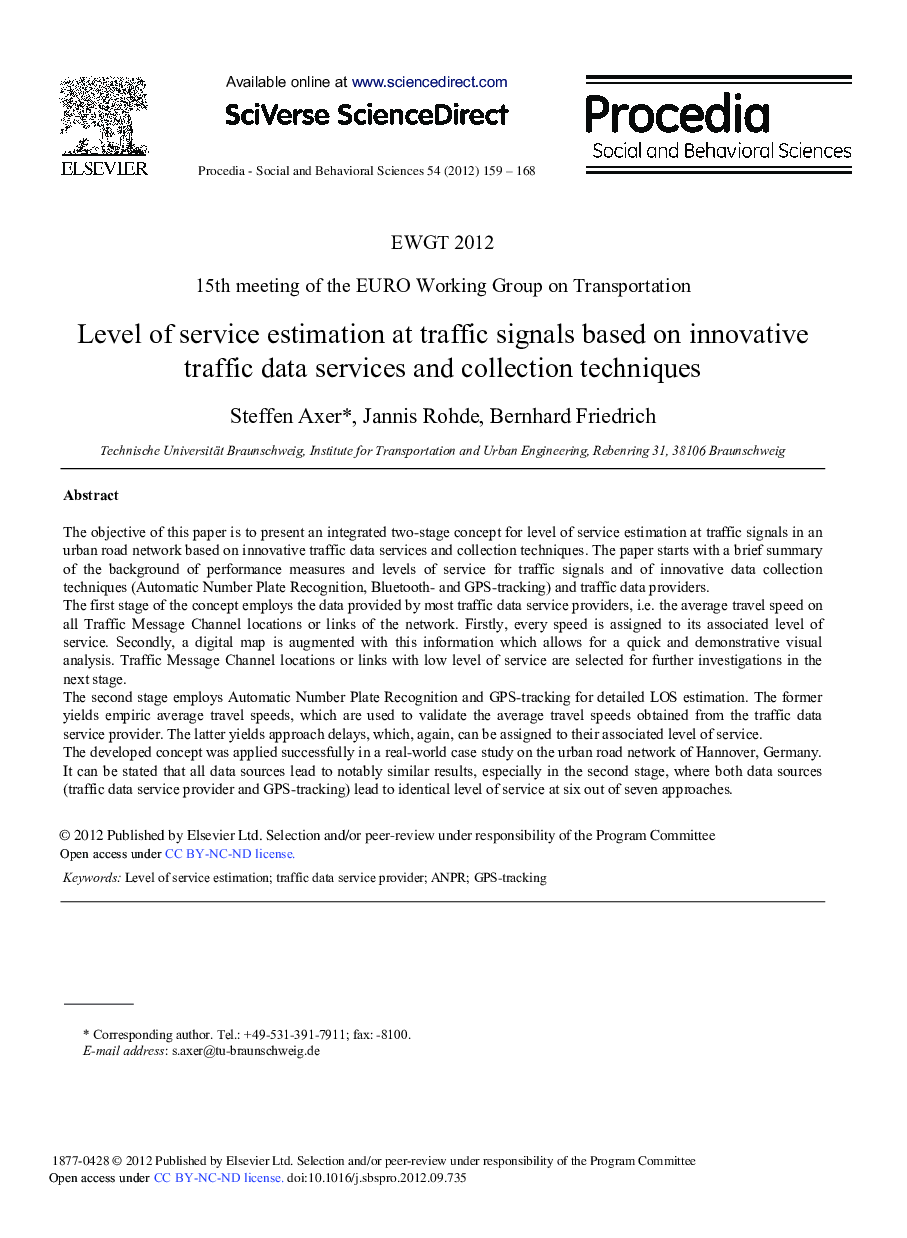| Article ID | Journal | Published Year | Pages | File Type |
|---|---|---|---|---|
| 1121353 | Procedia - Social and Behavioral Sciences | 2012 | 10 Pages |
The objective of this paper is to present an integrated two-stage concept for level of service estimation at traffic signals in an urban road network based on innovative traffic data services and collection techniques. The paper starts with a brief summary of the background of performance measures and levels of service for traffic signals and of innovative data collection techniques (Automatic Number Plate Recognition, Bluetooth- and GPS-tracking) and traffic data providers.The first stage of the concept employs the data provided by most traffic data service providers, i.e. the average travel speed on all Traffic Message Channel locations or links of the network. Firstly, every speed is assigned to its associated level of service. Secondly, a digital map is augmented with this information which allows for a quick and demonstrative visual analysis. Traffic Message Channel locations or links with low level of service are selected for further investigations in the next stage.The second stage employs Automatic Number Plate Recognition and GPS-tracking for detailed LOS estimation. The former yields empiric average travel speeds, which are used to validate the average travel speeds obtained from the traffic data service provider. The latter yields approach delays, which, again, can be assigned to their associated level of service.The developed concept was applied successfully in a real-world case study on the urban road network of Hannover, Germany. It can be stated that all data sources lead to notably similar results, especially in the second stage, where both data sources (traffic data service provider and GPS-tracking) lead to identical level of service at six out of seven approaches.
